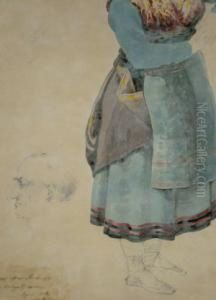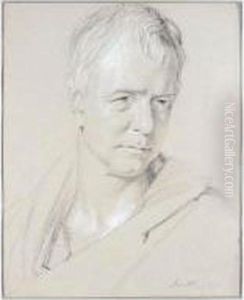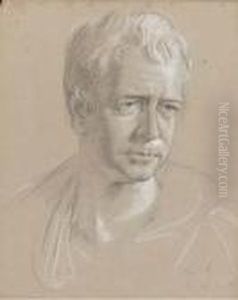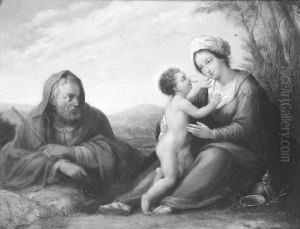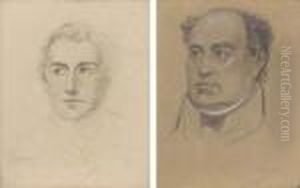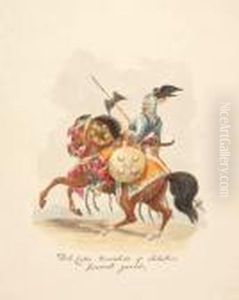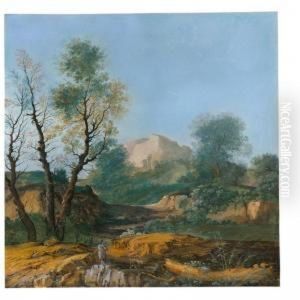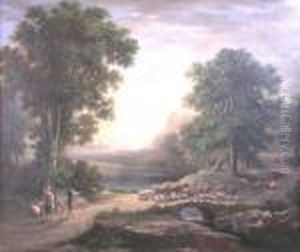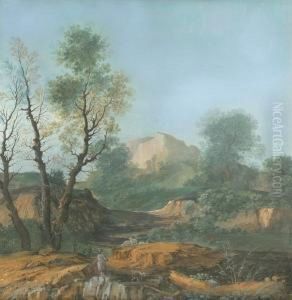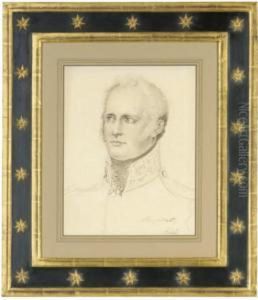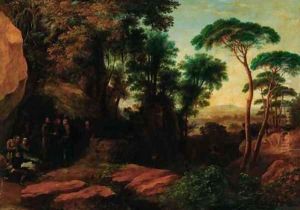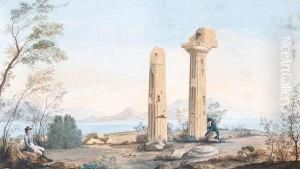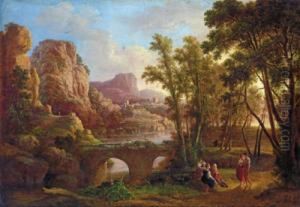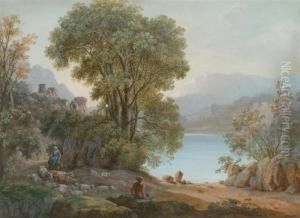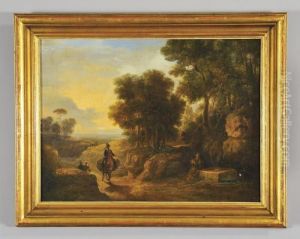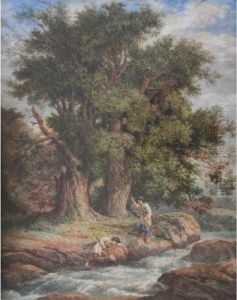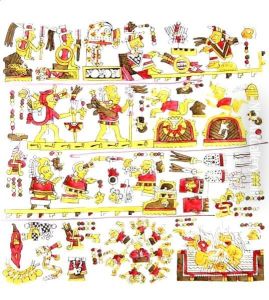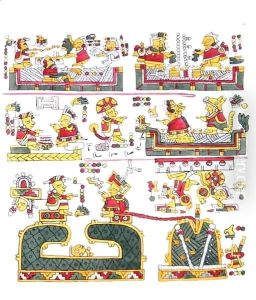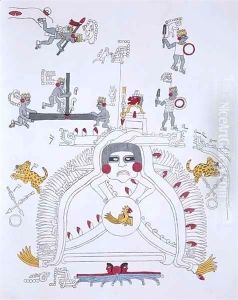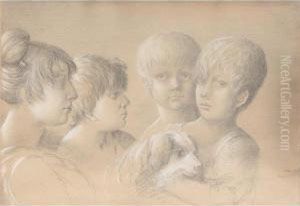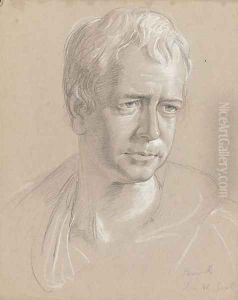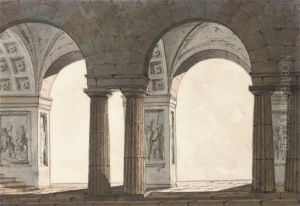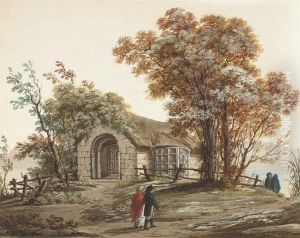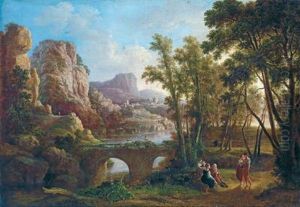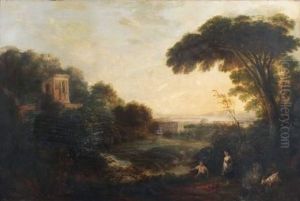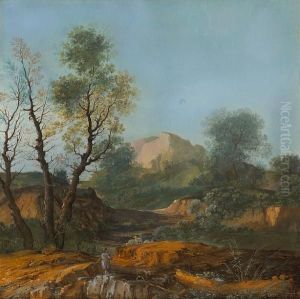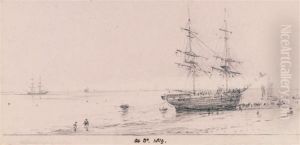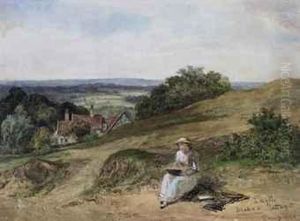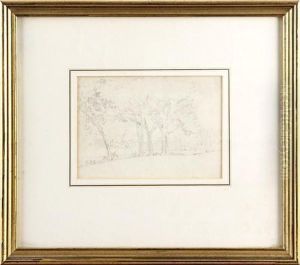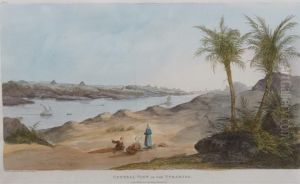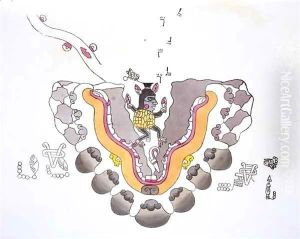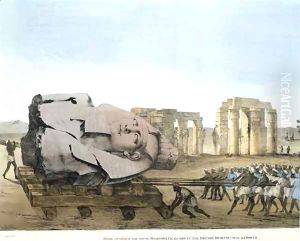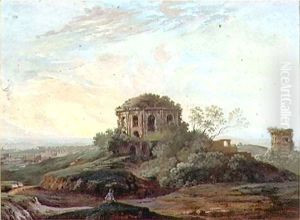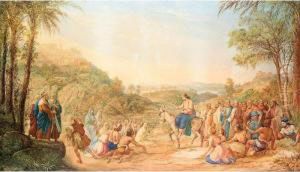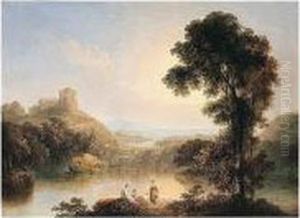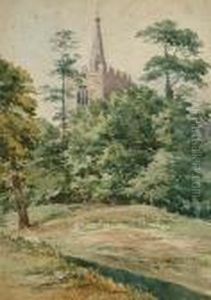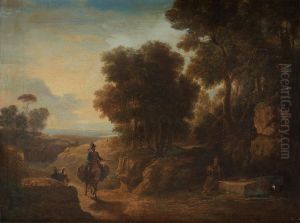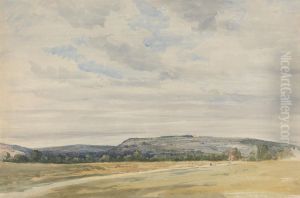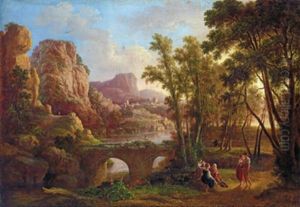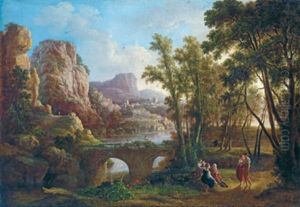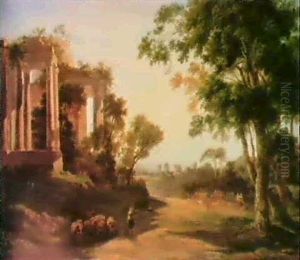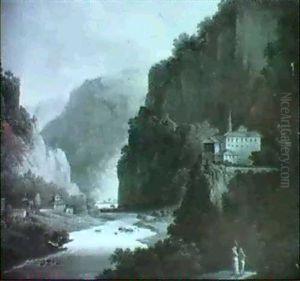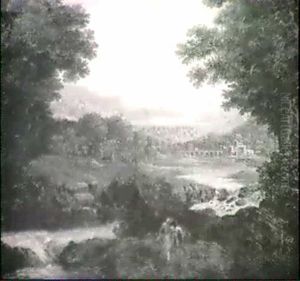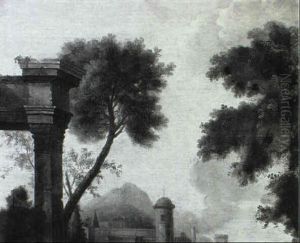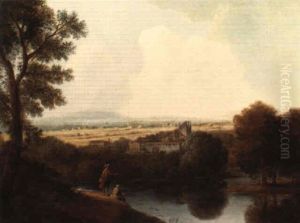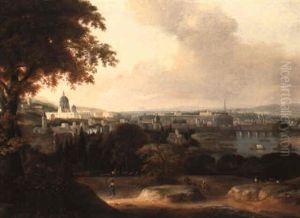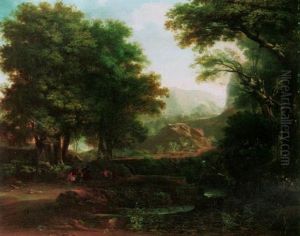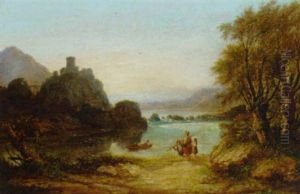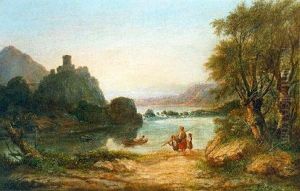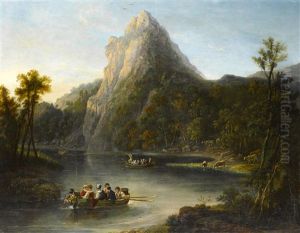Agostino Aglio Paintings
Agostino Aglio was an Italian painter, decorator, and engraver, born on December 15, 1777, in Cremona, Lombardy. He initially trained at the Brera Academy in Milan and was influenced by neoclassical styles.
Aglio began his career in theatre set design before expanding his work to include frescoes and decorative art for buildings. His talent in fresco painting was well-recognized, and he was commissioned to decorate various palaces and churches in Lombardy.
In 1803, Aglio moved to London, where he found a new audience for his work. He became known for his engravings and made significant contributions to Lord Elgin's publications on the marbles from the Parthenon. Aglio's work in England also included decorative projects for the Egyptian Hall in Piccadilly, where he painted large-scale murals with Egyptian motifs, reflecting the fascination with Egyptology during that period.
One of Aglio's major works was the illustration of antiquities for the publication 'Antiquities of Mexico,' which comprised drawings of Mesoamerican ruins and artifacts. This project was a monumental task that spanned several years, from 1830 to 1848, and it significantly contributed to the documentation and study of pre-Columbian cultures.
Throughout his life, Aglio continued to work on a variety of projects, including book illustrations, portraits, and landscape paintings. He is remembered for his versatility as an artist and his role in the dissemination of knowledge about ancient cultures through his detailed engravings and illustrations.
Aglio died on February 5, 1857, in London. His legacy continues to be appreciated by art historians and enthusiasts of the neoclassical and early archaeological illustration.
